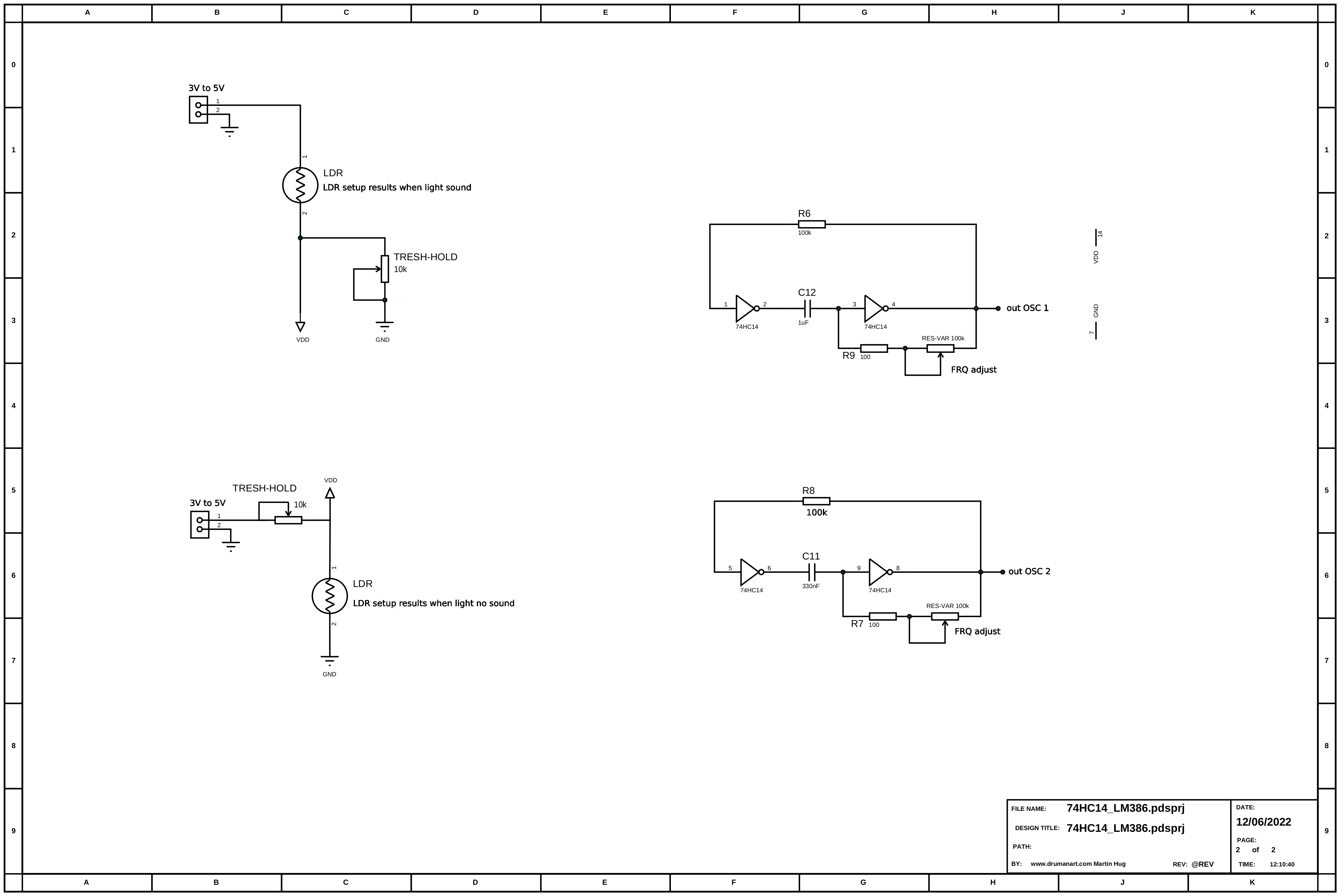
| Noise-Module using a 74HC14 Schmitt-Trigger |
|
- page last updated June 2022 - (página en castellano)
|
 |
|
The 74HC14 is a chip witch incorporates 6 inverter modules and, as the IC`s name indicates, the modules transposes a signal connected at its input as an opposite state at its output. Now, when connecting a resister from the output of one of the 6 inverter modules to the input to the same module and, important, with a capacitance in between, the IC starts oscillating in a siren-like manner, nasty and ugly (hear-able only if amplified of course) and always with the same frequency. To create more interesting sounds we power-up the IC through a light depending resistor (LDR). The 74HC14 is used in electronic circuitry to get absolutely precise opposite signals, but in the way we apply the voltage (and current) to the IC the chip gets absolutely unstable and produces signals at its output with a lot of changes in frequencies, overtones and amplitudes, in other words with very interesting sounds. I reality we are bending the chip in a weird manner, but with the result of rich floors of frequencies, harmonics and colourful sounds with the very imported feature that one can manipulate the sounds through the light density LDR, so a performer or dancer is able to interfere the sound while moving. |
| Schematics of the 74HX14 oscillators (show entire schematics) |
 |
| Simple sound example |
|
|
|
Silencing the sound-module: There are two basic situations when one is performing: Sound is created when light is over the LDR or sound is created when the LDR is darkened. To solve both options a potentiometer can be connected to the LDR like indicated in the schematics further up on this page. One can not have both options for one sound-module. To be able to influence of the general sound behaviour of the module each oscillators, there are two for each module, can be set-up through a potentiometer. |
|
How to use the sound-module: To control the sound-module with a LDR (Light Dependent Resistor) it is of importance to be able to have control over the light of the space where one is performing. So a space with artificial lightning, theatre situation, is better then a room with daylight because of the changes of light-intensity of the hour of the day and weather situation (Gray or sunny days). The LDR, and within the timbres of the sounds, are very sensitive to any small changes of light, influencing the sound-colour tremendously. A performer is able to change sounds even if he moves far away from the LDR, only in playing with his shadow. When using a variety of sound-modules like monika jeakel did for here video “Reverberating Interfaces -Explorations into Thingness” an interesting sound-space can be created, where the performer is able to influence over the sound while performing. |
| in this page you find: - description of the circuit. - detailled schematics with the LM386 amplifier IC. |
| visualize the entire schematics of the sound module |
 |
|
HTML
Comment Box is loading comments...
|
|
|
 |
no download available |
 |